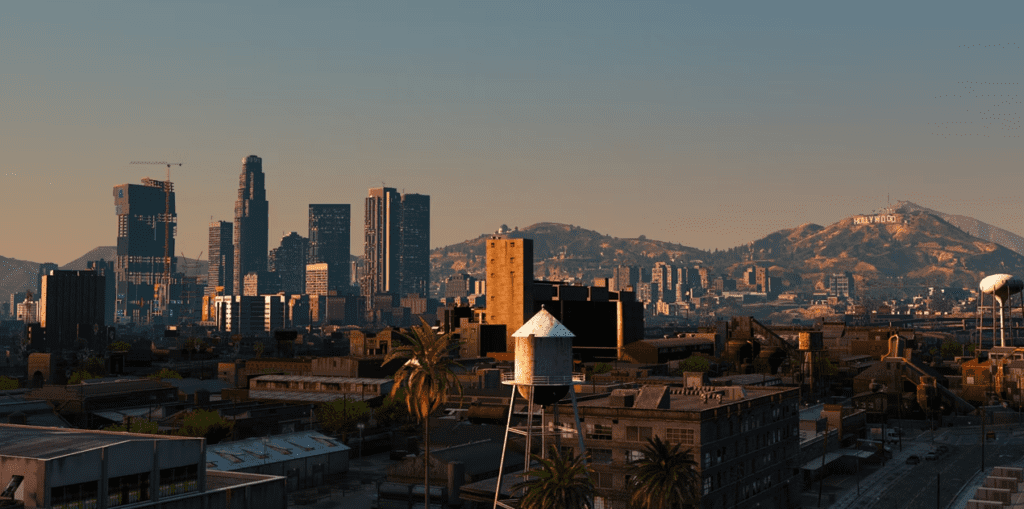Did you know that gaming is one of the most popular hobbies in the world, with a huge following of players of all ages? In fact, according to Statista, around 40% of the global population were gamers as of 2021. That’s a lot of people who are passionate about gaming and are always on the lookout for new and exciting experiences in beautiful, hand-crafted worlds.
It’s only natural that, with such a massive player base, developers create thousands of games every year. By the way, in 2021 alone, more than 10,000 games were released on Steam!
With so many games being published with every passing week, how can one create something that will stand out from the crowd? One of the best ways to do so is to invest heavily in creating immersive and compelling 3D game environments.
As you will see in this article, designing them can be a challenging but rewarding task! We will talk about what they really are, which tools and workflow designers use to create said environments, and some guidelines to help you create great-looking ones for your project.
If you want to design compelling 3D game environments, there are several key aspects to consider in the game development process. 3D environment design plays a crucial role in crafting immersive and realistic game worlds. It involves various stages, from concept art and 3D modeling to optimizing detailed 3D environments for gameplay.
An art director leads a team of talented 3D artists and designers, utilizing popular 3D modeling software and game engines to create a highly detailed game world. This section provides detailed tutorials and resources on creating different world genres, using techniques such as crafting 3D environments from photo sources and creating realistic textures. By understanding the evolution of 3D in the game industry and leveraging modern computer graphics, you can effectively portray dynamic and believable game worlds that captivate players.
What is a 3D game environment?
A game environment is, in simple terms, the world and setting in which your game takes place.
In the case of three-dimensional (3D) games, their environments must have visual depth. This way, players are able to perceive that every object within it has a volume and that their shapes can change depending on the angle at which they look at them. Thanks to this effect, 3D environments are naturally much more believable, realistic and immersive than their 2D counterparts.
The professionals working on this game aspect are called environmental designers. No matter how big and ambitious a project is, designing and creating immersive and engaging environments is an art in and of itself. It’s a multi-step process involving many game development areas, including worldbuilding, concept art, 3D modeling/sculpting, and rendering tricks.

However, the creation of a 3D game environment can be boiled down to two core elements: world design and level design.
World design and level design in games
The former refers to the overall design and creation of the game world, like the setting, lore, theme, and tone of a game. It also refers to the objects, challenges, and events that players will interact with while playing the game.
During the development of many games, designers, following the early concept, create a top-level map that revolves around the player’s main objective. In adventure games, for example, the final boss might be located diametrically opposite to the player’s starting point, which encourages exploration of the hand-crafted world around them.
Effective world design is an important aspect of game design because it helps players get immersed in the game, enhancing their overall experience. Truly well-designed game settings can make the player feel like they’re part of the game itself, a piece that interacts with the world and can be interacted with.
Level design, on the other hand, refers to the design and layout of individual levels (or stages) within a game. Its main goal is to create a challenging and engaging experience for the player as they progress through the game. Nevertheless, it’s a balancing act: make a level too easy and players might get bored; make it too hard and players might get frustrated.

Furthermore, games with great level design guide players through their current goals without giving them clear directions. It might not be obvious at first, but rubble piles, towering walls the player cannot climb, and other obstacles often indicate the player is going the wrong way. Not always, though – they can sometimes indicate secret passages or hidden puzzles.
Level design is also a crucial aspect of game design as it helps to create a sense of progression and accomplishment for the player. By slowly introducing new challenges and mechanics, you help keep the game interesting for them.
Creating 3D game environments: tools and process
Just like you need specific applications to browse the World Wide Web, you need some tools to create the models for your environment.
- 3D modeling: there are numerous applications you can use for 3D modeling, but many, like Maya and 3DS Max, are very expensive for daily use. Thankfully, Blender, one of the best modeling softwares to date, comes as a free and open-source alternative.
- Texture creation: textures are best created in softwares designed specifically for flat digital artwork, like Adobe Photoshop. Free and open-source alternatives include Krita and GIMP.
The process: step-by-step
Even though the specifics might vary depending on your game’s specifications, the usual game environment design workflow goes as follows:
- Collect references: work with concept artists and other game designers to collect and/or create reference material for the team to use down the line. Anything will do: be it a quick sketch or a mood board resulting from an intensive reference hoarding session on Google and Pinterest;
- Conceptualization and early composition: use all reference images and concept sketches generated in the previous step to build something of your own. Before adding details to your models, start by greyboxing your 3D environment – the use of simple, almost primitive shapes to arrange all the main pieces in their location, with which you can assess whether the level is playable, if it’s navigable, and if it will look good when finished;
- Creating and detailing your assets: after arranging all the pieces in their proper positions, it’s time to use any 3D modeling tool to model and add detail to all the elements in your game. This includes not only all the buildings but the objects, creatures, trees, vegetation, and everything else the player will see;
- Texturing: use Photoshop or another tool to create 2D textures and apply them to your 3D models. It’s possible to add a variety of details to 3D models by using textures, such as color, variations, bump maps, and specular maps;
- Add lighting and visual effects: after assembling a scene, you can create whatever mood you like by setting the proper amount of light sources and controlling their angle and intensity. As the models will interact with light rays being cast onto them, they will have highlights and shadows, making them feel natural. In addition, you can add visual effects (like rain, wind particles, and more) to further enhance the atmosphere of your scene – fog, for example, can add an ominous, eerie vibe to your game’s scene.

Guidelines to create a fantastic 3D game environment
Now that you understand the process through which game environments are created, let’s go deeper and see how to create truly incredible game worlds:
- Consider your game setting: for example, if the setting of your game is a city filled to the brim with tall buildings, then you will likely have numerous streets with a lot of cars. Bins might be everywhere and there might even be some trash splattered all over the ground. Graffiti art might be commonplace and there will be many people walking in the streets – some minding their own business, some not.
- Populate your game with the right amount of objects: these details are very important for immersion, but it’s a balancing act too – add too much, and it might feel too overwhelming; add too little, and the game might feel stale and empty.
- Use lighting, color, and weather to define the mood: in more casual, relaxed games, the colors are vibrant and bright, which helps players relax. Games in grittier settings, like Cyberpunk 2077, tend to be darker, less saturated, and make great use of lights and shadows to create contrast.
- Give players direction, but do so without holding their hands: great environmental design and level design go hand in hand. Many players hate feeling lost and not knowing where to go next, but many also get bored if the next step is always clear and straightforward. Instead, make the 3D game environment catch the player’s attention in some way or another, nudging them in the right direction.
- Reward your players for exploring: if a player discovers a hidden path or something easy to miss, they expect a reward. It could be literally anything – a collectible, lore snippets, an upgrade, you name it – as long as it’s not empty. Even though they are not necessary to 100% complete most games, they do add another layer of fun for many players, and great environmental design is fundamental for this.

Awe-inspiring game environments made easy with Main Leaf
In conclusion, designing 3D game environments is a challenging task that involves a combination of creative vision, technical skills, and a deep understanding of level/world design principles. By collecting references and concept sketches, using them to greybox an environment, creating your 3D models, texturing them, and adding lighting to your creation, you can create immersive and engaging virtual worlds that players will love exploring.
We understand, however, that producing fantastic 3D game environments to support your game’s plot can be difficult and time-consuming. For this reason, outsourcing your work to professionals in the industry is always a smart choice!
Here, at Main Leaf, we have a team of 70+ highly-skilled professionals ready to take on the creation of your upcoming game’s environment. Our development process follows Scrum, an agile methodology that heavily quickens the production of a game. By the way, we provide full-stack game development – we will work on your game from the ground up and publish it on the major gaming storefronts for you!
Request a game quote for your upcoming project right now – for free! – and get a reply within 24 hours!

